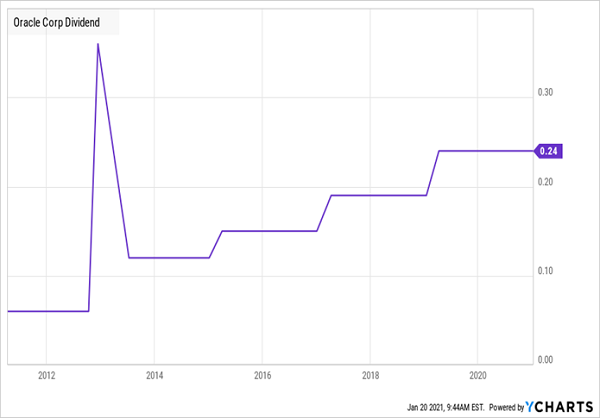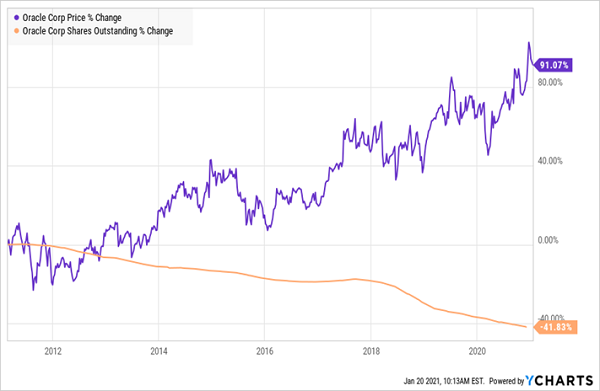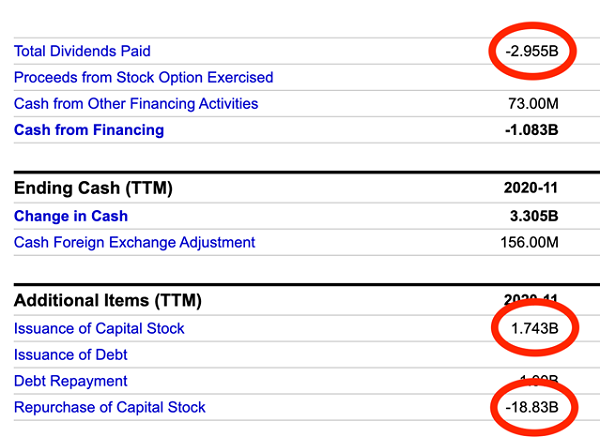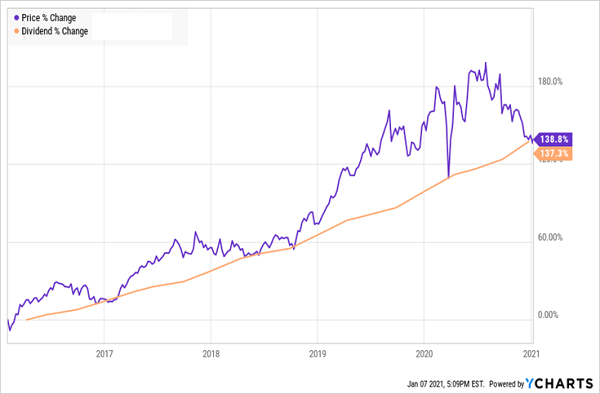There are dozens of huge yields out there that no one ever talks about. I’m talking about payouts 6-times (or bigger) than the pathetic 1.5% dividend the typical blue-chip stock pays.
Swapping Dividend Yield for Shareholder Yield
These big “hidden yields” really are hiding in plain sight. The key to finding them is to set aside dividend yield for a moment and focus on shareholder yield.
Shareholder yield is a simple measure that goes beyond dividends to show you the big-picture view of what you’re pulling in from a stock—including another way companies pay us that doesn’t get nearly enough press (or at least nearly enough positive press!).
That would be share buybacks. Because only when you add a company’s buybacks to its dividends do you get a true idea of what it’s paying you. Shareholder yield is simply the two added together.
Hang with me for a second as I show you exactly how this works, how it ignites your profits and how to calculate shareholder yield yourself.
Start With the Current Yield …
Let’s start with a big-name stock many folks have owned for so long they’ve probably forgotten they even hold it. That would be Oracle Corp. (ORCL), which has been around since the late-70s and peddles database software and cloud-computing systems.
As I write this, Oracle yields 1.7%, so pretty much bang on the S&P 500 average. Pathetic, I know, but don’t worry. It’s just our starting point.
… Add a Hit of Payout Growth …
If you’ve held Oracle for a while, you’ve likely barely noticed its dividend hikes—over the last few years, it’s dropped a two- or three-cent increases on shareholders every couple years, plus a one-time special payout in 2012:
Oracle’s Steady—but not Spectacular—Payout Growth

But those seemingly ho-hum hikes have added up: over the last decade, Oracle’s regular monthly payout has quadrupled. So just in the last 10 years, your yield on cost—or the payout you’re getting on your original buy—has jumped to 3%, or nearly double what buyers are getting if they pick up the stock today.
… and Ignite Your Returns With Share Buybacks
I know what you’re thinking: a 3% dividend is still pretty low, especially after a 10-year holding period. And that’s where the second stage of shareholder yield comes in: share buybacks.
Buybacks have gotten a bad rap, but the truth is, when they’re done when a stock is cheap, they’re a tonic for share prices. This is why it makes sense for Oracle to buy back its stock, which trades at a reasonable 18.9-times earnings. It’s also why the recent news that Netflix (NFLX), which is trading at all-time highs and at 95-times earnings (!) makes no sense at all.
How Well-Timed Buybacks Boost Your Profits
Buybacks work because they inflate the per-share indicators investors watch like a hawk, like earnings per share. That, in turn, should convert into higher share prices.
Another little-mentioned benefit of repurchases is that they create a wonderful “feedback loop” that boosts dividend growth, because fewer shares outstanding means fewer shares on which the company has to pay out.
Companies also like buybacks because they give them flexibility—they can throttle back repurchases if they see a better way to boost your return (like an expansion or an acquisition) without facing the investor tantrum—and share-price crash—a dividend cut usually brings.
That’s likely why Oracle boss Larry Ellison leans much more heavily on buybacks than dividends—he’s slashed the company’s shares outstanding nearly in half in the last decade and kept on doing so through the March 2020 nightmare, when company after company dumped their buybacks and their dividends.
You can see the share price rising over the last five years as the share count fades:
A Well-Executed Buyback in Action

To bring this full circle, when you combine Oracle’s buybacks with its current dividend payout, you get its shareholder yield—or what I call its “true” yield—what it’s paying us in the form of dividends and buybacks!
That comes out much higher than the pathetic 1.7% trailing-12-month dividend yield—it’s more like 11%! And the shareholder yield on a buy made today will only grow from here as buybacks and dividend growth continue.
The formula for figuring out a company’s current shareholder yield is pretty simple: take the amount spent on share repurchases in the last 12 months, deduct any cash brought in through share issuances, then add in the total spent on dividends. You then take that sum and divide it into the company’s market cap, or the value of all its outstanding shares.
The Shareholder Yield 3-Step

Source: Ycharts
In Oracle’s case, that comes out to an 11% shareholder yield, based on its $182.35-billion market cap as of the time of this writing (10.99%, to be exact!).
The only hitch? To capture this big yield, we still have to buy and hope that buybacks kick in and work their magic, which doesn’t always happen, at least not right away. But we can remedy that by emphasizing stocks that lean more toward a high current dividend yield and/or strong dividend growth to pay us.
That brings me to another stock to put on your watch list: insurance giant Prudential (PRU), which boasts a trailing-12-month shareholder yield of 8.4% and a high trailing-12-month dividend yield of 5.2%. In other words, just under two-thirds of its shareholder yield comes from its high dividend.
The company stands out for two other reasons:
- It trades at a ridiculous 50% of book value, or what it would be worth if it were broken up and sold off today.
- Prudential is also a great play on the rising 10-year Treasury rate, which just broached the psychologically important 1% barrier.As rates rise, Prudential and other insurers benefit because they invest the premiums they collect in, among other things, government and corporate bonds, and yields on those bonds rise with Treasury yields. Those higher yields fatten insurers’ net interest margins, or the difference between investment returns and claims paid out to policyholders.
Translation: higher profits—and higher share prices to go with them!
Prudential is also an aggressive share repurchaser, having taken 11% of its stock off the market in the last five years, while growing its dividend 57%. With a very safe 10% of free cash flow paid as dividends, you can expect that payout to keep rising.
Exclusive: 13 “Hidden Yield” Stocks With Soaring Payouts (names below)
Oracle and Prudential are both attractive from a shareholder-yield standpoint, but they’re also popular names that show up a lot in the financial media.
We’ll find even better bargains, with more upside (and less downside!) if we go just a few steps off the beaten path. And that’s where the portfolio of my dividend-growth advisory—not coincidentally named Hidden Yields—comes in.
I want to share this exclusive portfolio with you today: it boasts 13 off-the-radar (for now!) buys boasting high shareholder yields through fast payout growth, skillfully executed buybacks—or both!
The names and tickers of all 13 of these cash machines are yours when you try the service with no risk and no obligation for 60 days.
And that’s not all: I’ll also give you an exclusive special report naming my 7 very best buys for your portfolio as we kick off 2021.
These 7 picks are all doing exactly what we need them to right now: kicking out huge yearly dividend increases that are attracting more and more investors—who are bidding up their stocks in lockstep with their ballooning payouts!
Buy These 7 Stocks Now—Before Their Next Dividend Hike
Pick No. 1 is a great example. It boasts a portfolio of cell towers that are cranking out higher and higher rents as each of us gobbles up more mobile data.
And management is turning around and handing that surging cash stream to its investors as a dividend that rises every quarter and has jumped an amazing 137% in the last 5 years. That, in turn, has driven its share price up almost point for point as more investors have come onboard:
137% Dividend Hike Ignites Pick No. 1’s Price

The other 6 stocks in this report all have dividends that are surging just like this, and I expect their share prices to ride their payouts up over the next 5 years, too!
